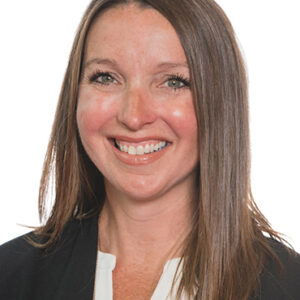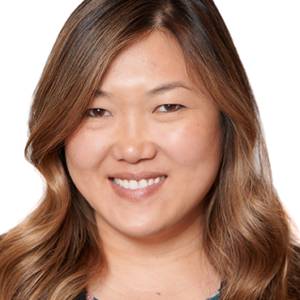This blog was written and produced by Karen Donovan, Director of Clinical Operations at Beacon Solutions. Looking to get in touch with Karen? Reach out today: kdonovan@BeaconSolutionsGroup.com.
Home Health Care truly represents an “up and coming” post-acute care service line. Not only as we see the onslaught of the pending “silver tsunami” on the horizon, but as we begin to emerge slowly from this unprecedented pandemic, we are, as an industry, realizing that both hospital systems and insurance companies are viewing home health care as a viable option not only to ease patient overloads in acute care, but also as an effective, cost-efficient alternative for patient care. Home health can lead to better outcomes, maintain strong infection prevention, and keep patients happier being surrounded by family in a familiar environment.
At the same time, with the development of more favorable reimbursement models like PDGM and the changing opinions on telehealth and asynchronous care, as a society, we are adapting and accepting new and innovative approaches to monitoring health status and treating ailments. Now, is the time to acknowledge this as an opportunity to grow our industry and rise to the new challenges that face us all. While this is a tall order, we do believe it’s attainable by systematically developing a plan to transform HHA business today. So, the greatest question becomes, where to start?
We suggest you take the time to work on your home health business “transformation teams”… Approach the endeavor from multiple angles including care management, coding practices, medical documentation, and communication, as well as accurate and complete claims production. Recruit your team members including both leadership and operations staff that know the day-to-day happenings of your operation and the hurdles they are facing in the field routinely. Have those teams identify your goals through mini “mission statements” in these critical areas that reflect how you intend to manage these aspects of your business and your anticipated outcomes.
Care Management: Ultimately, the concept of care management involves the overall treatment plan to meet the patient’s needs based on medical conditions and the coordination of resources to bring this plan to fruition. Think of a conductor and their role in leading an orchestra through a complicated concerto. They must coordinate the timing, tell everyone when to start playing when to stop, and keep the pace uniform throughout to make sweet, sweet music.
In homecare the management and timing of resources is one of the most pivotal components. Particularly with the change to PDGM the need to monitor and ensure the most beneficial visit schedule for the patient (as well as the business) is more important than ever in managing the complex requirements of the environment. This involves having a solid understanding of the patient’s needs, strengths, and goals, as well as the HHA’s resources. These can be very flexible elements that will change drastically from day-to-day. So, to best master, your team should take into consideration service modeling including, but not limited to, timely starts of care for all disciplines. If you aren’t successfully using “care mapping” now is the time to start.
Coding Practices: Managing coding practices in your HHA is a critical factor to reimbursement within the PDGM methodology. Specifically, coding the OASIS tool and knowing your medical diagnosis coding and how to sequence it. For instance, section GG represents the functional piece of the PDGM reimbursement. The assessment itself and recording/documentation of the patient’s function is critical, as such, investing time in the education of and enhanced awareness to all involved with this particular coding as well as development of formalized protocols to assess & document are a crucial component to success.
Similarly, capturing the diagnosis and proper sequencing of the data is also important. Sequencing of the diagnoses, knowing which is primary and which are secondary, can be complex. Coding guidelines from the ICD-10-CM Official Guidelines for Coding and Reporting must always be followed and that can mean that a diagnosis which is the primary reason for home health and documented by the physician on the face-to-face encounter could be in the first secondary diagnosis, rather than the primary, due to such rules as manifestation/etiology codes or “code first” coding instructions. The primary service, highest frequency of discipline, etc. must be taken into account when assigning a primary diagnosis. To best master coding, your team should review current guidance, your established educations, policies/protocols, and the data you are collecting for both completeness and accuracy.
Medical Documentation and Communication: This represents a foundation to both aforementioned points and acts as the primary source to support HHA claims and all associated denial management endeavors. An organization would be remiss not including this as a major initiative as a part of business transformation. Develop and adopt a consistent process for documenting the staff-to-staff discussions that are occurring as part of the care coordination. This makes up an important piece of the interdisciplinary aspect of care for the patient. Additionally, it will reinforce your skilled documentation policies and provide optimal outcomes for patients while substantiating the continued need of the home care agency’s services. This process should then be reviewed on a routine basis and brought to the quality meetings for team discussion and planning. This will ensure that the leadership team is involved in the initiative and is supporting the operational team in this endeavor.
Some key times to remember to document:
- When staff are discussing the patient’s progress
- During care conference meetings whether in person or virtual
- When planning visits to maximize strategic visit scheduling
- Anytime you are addressing the patient’s plan of care items
- When care has been provided at visits
- If there are changes noted in the patient’s progress or condition
- When contacting a medical provider
As caregivers, we often push forward with the tasks on our “to do” lists without much thought to documentation. We need to foster in ourselves and our staff the idea that the documentation of these “to do” items is in fact, part of the care we are providing to our patients, even if it is a staff-to-staff discussion of the patient’s progress or development/coordination of the plan of care.
Claims Production: In the end, success does become a measurement of being able to produce viable claims and in getting reimbursed for these claims. This becomes your chance to “Monday Morning Quarterback” your organization! Remember, hindsight is 20/20 but only effective if you learn from it. Developing a plan to monitor and audit claims as well as the supportive documentation. As you discover issues or negative trends engage your transformation teams to continue your journey.
Lastly, celebrate your team and its successes. Nothing is better for changing culture than the identification and recognition of the hard work that goes into it!
This material has been prepared for general, informational purposes only and is not intended to provide, and should not be relied on for, tax, legal or accounting advice. Should you require any such advice, please contact us directly. The information contained herein does not create, and your review or use of the information does not constitute, an accountant-client relationship.



